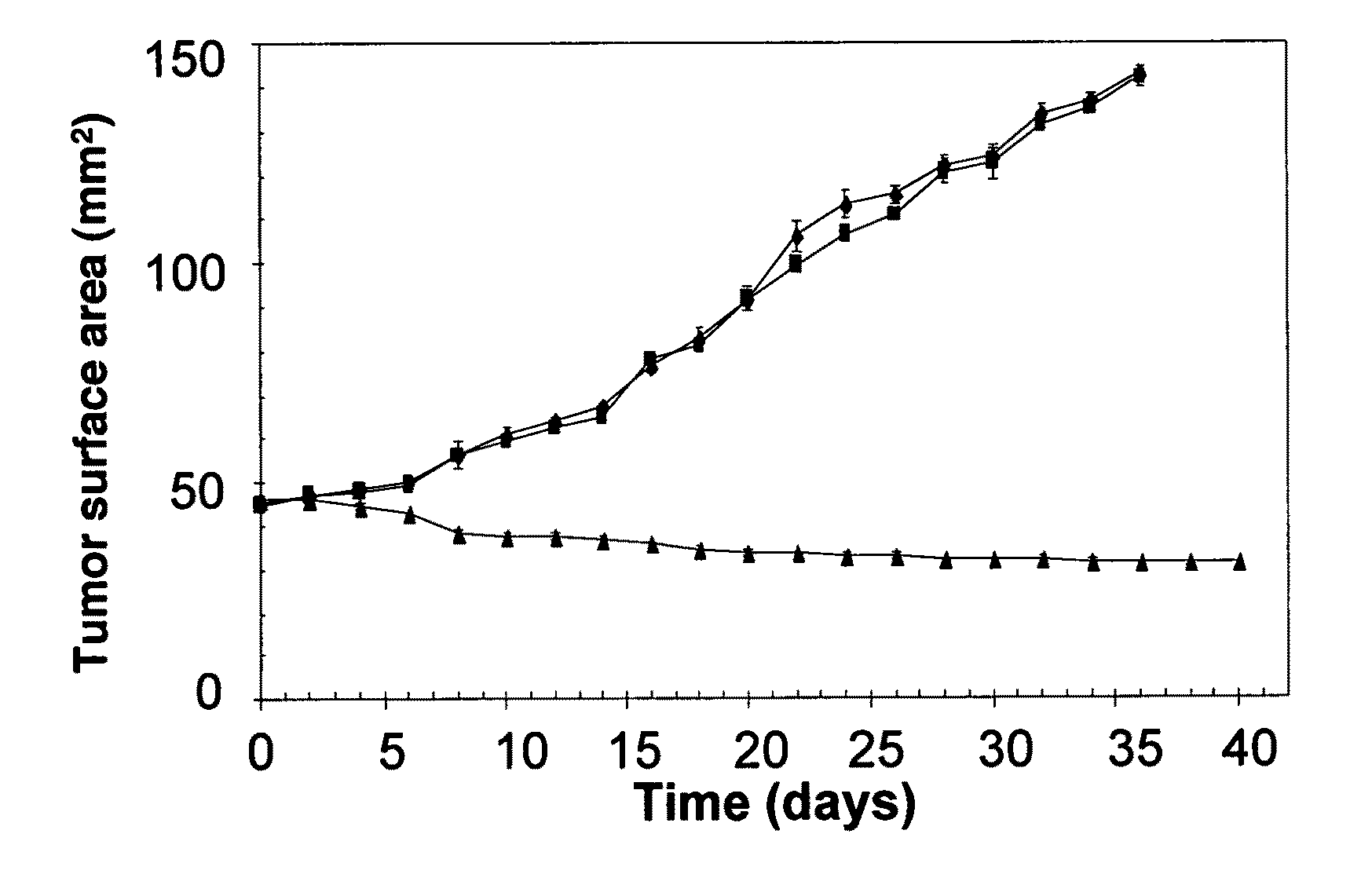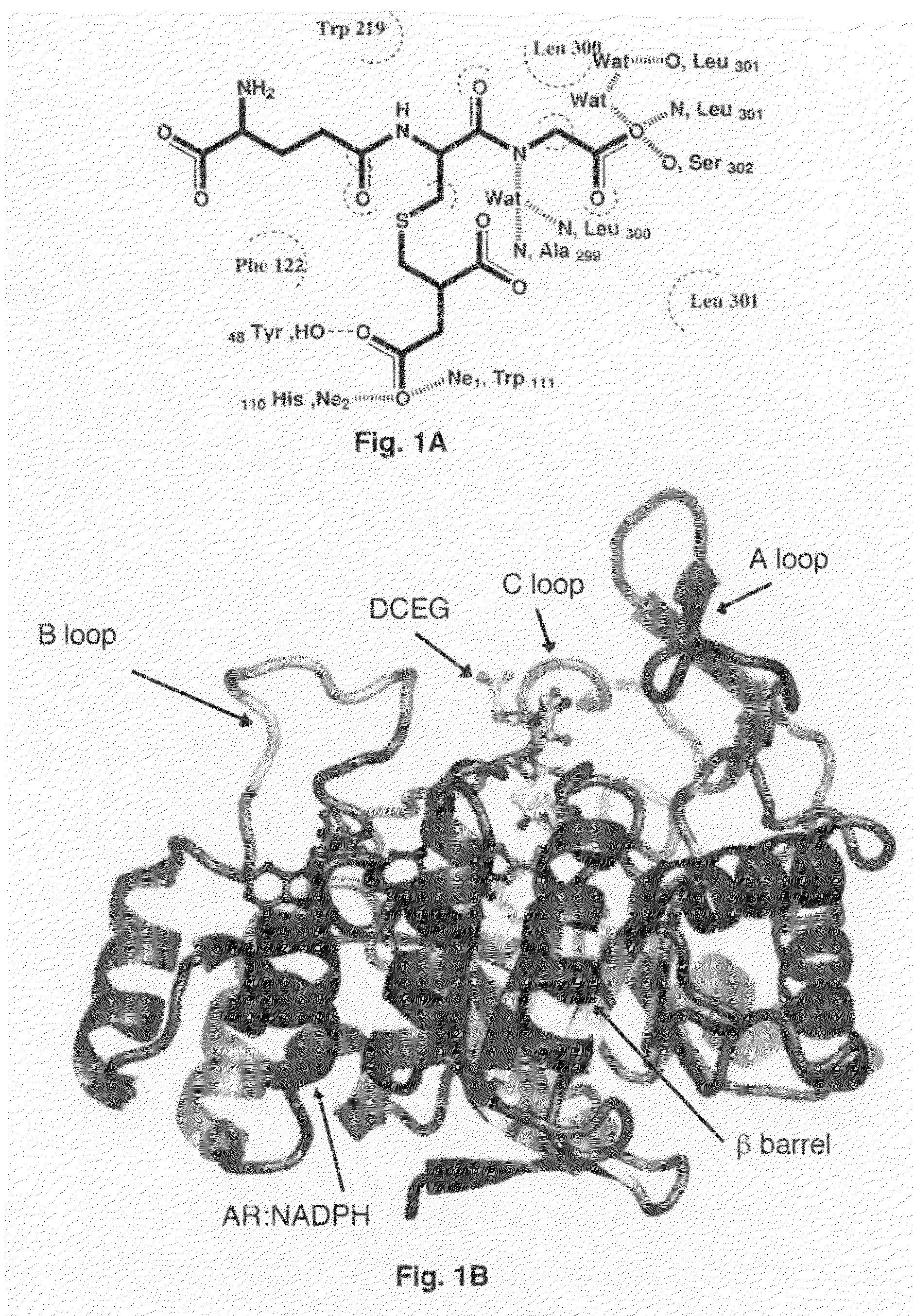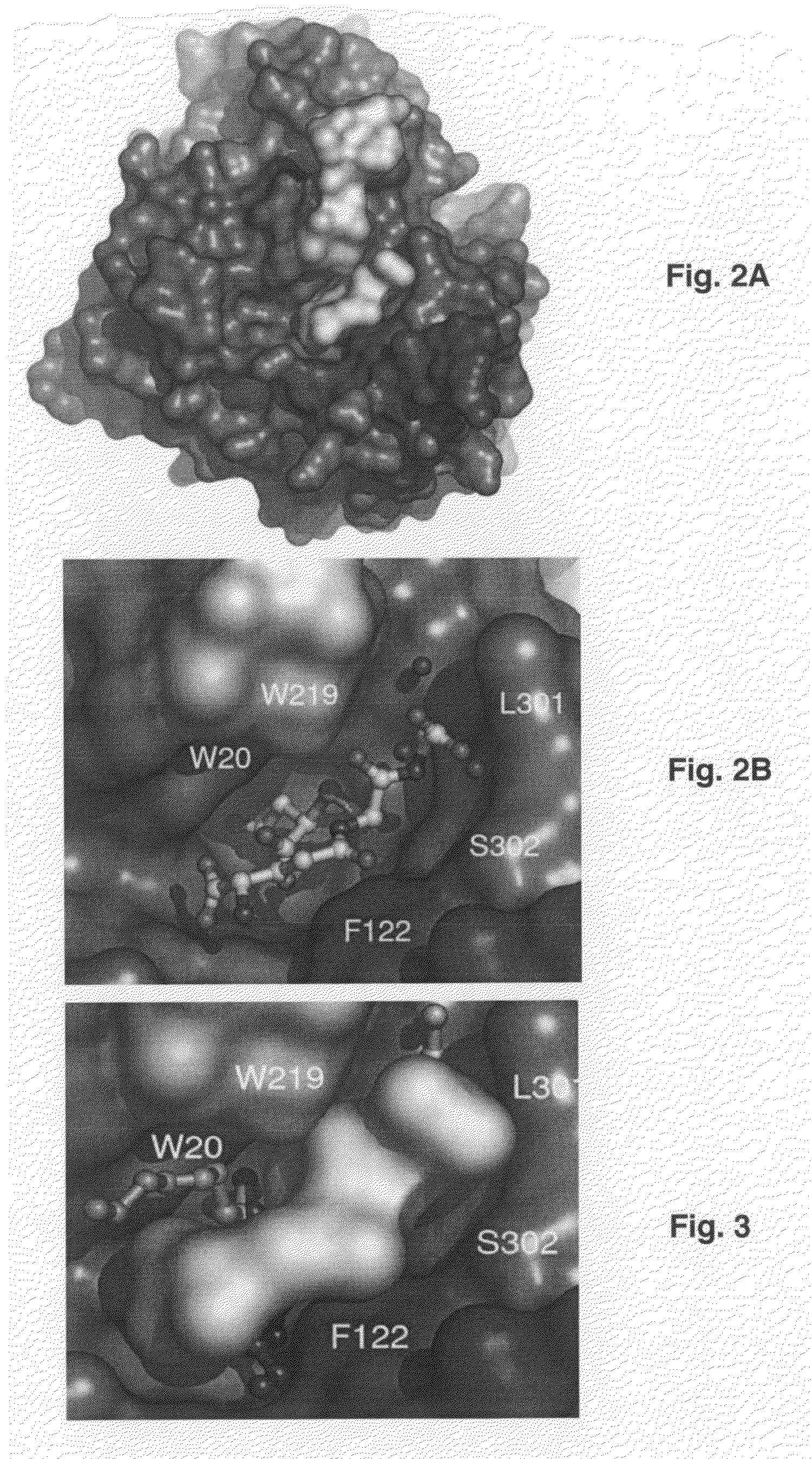Structural-based inhibitors of the glutathione binding site in aldose reductase, methods of screening therefor and methods of use
a structural-based inhibitor and aldose reductase technology, applied in the field of enzymes, protein structure and drug screening, can solve the problems of deficiency of aldose reductase in the early ar
- Summary
- Abstract
- Description
- Claims
- Application Information
AI Technical Summary
Problems solved by technology
Method used
Image
Examples
example 1
Aldose Reductase Crystallography and Inhibitor Design
Overexpression and Purification of Recombinant Human AR
[0063]Recombinant human AR was over expressed and purified as described previously (23). In brief, the cell extract was subjected to chromatofocusing on PBE94 (Pharmacia LKB Biotechnology Inc.) followed by hydroxylapatite column chromatography and reactive blue affinity chromatography as the final step. All purification buffers contained 1 mM dithiothretiol (DTT).
Crystallization of the Ternary Complex
[0064]Purified AR was concentrated by ultrafiltration (Amicon YM-10 membrane) to ˜10 mg / ml. Prior to crystallization, 10 mg / ml AR in phosphate buffer (10 mM phosphate pH 7.1, 0.5 mM EDTA, 10 mM DTT) was incubated with NADPH and DCEG (γ-glutamyl-S-(1,2-dicarboxyethyl)glutathione) at a AR:NADPH:DCEG molar ratio of 1:2:2 for 10 min at 4° C. The ternary complex was crystallized using the vapor diffusion method at 4° C. The protein:ligand solution was mixed with an equal volume of 22% ...
example 2
Aldose Reductase Inhibition: Materials and Methods Materials
[0087]McCoy's 5A medium, Dulbecco's modified Eagle's medium (DMEM), phosphate-buffered saline (PBS), penicillin / streptomycin solution, trypsin, and fetal bovine serum (FBS) were purchased from Invitrogen. Antibodies against Cox-1, Cox-2 and phospho PKC-b2 were obtained from Santa Cruz Biotechnology, Inc. (Santa Cruz, Calif.). Sorbinil and tolrestat were gifts from Pfizer and American Home Products, respectively. Mouse anti-rabbit glyceraldehyde-3-phosphate dehydrogenase antibodies were obtained from Research Diagnostics Inc.
[0088]Cyclooxygenase (Cox) activity assay and prostaglandin E2 (PGE2) assay kits were obtained from Cayman Chemical Company (Ann Arbor, Mich.). Platelet-derived growth factor (PDGF), basic fibroblast growth factor (bFGF), 3-(4,5-dimethylthiazol-2-yl)-2,5-diphenyltetrazolium bromide (MTT), and other reagents used in the Electrophoretic Mobility Shift Assay (EMSA) and Western blot analysis were obtained fr...
example 3
[0105]Effect of AR Inhibition on TNF-a Generation in High Glucose
[0106]The effects of inhibiting PLC, NADPH oxidase and aldose reductase on the production of TNF-α in a culture medium (rat VSMC cells) are demonstrated. Growth-arrested VSMC in 5.5 mM glucose (NG) were preincubated for 1 h without or with apocyanin (25 mM), D609 (100 mM), calphostin C (0.2 mM), N-acetyl cysteine (10 mM) and NF-kB inhibitor (18 mM) respectively, followed by the addition of 19.5 mM glucose, after which the cells were incubated for 12 and 24 hrs. As shown in FIG. 5A, incubation with the PC-PLC inhibitor (calphostin C) markedly decreased TNF-α secretion. A similar decrease in TNF-α was observed in cells treated with the NADPH oxidase inhibitor apocyanin and the antioxidant N-acetylcystein. Collectively, these observations support a mechanism in which high glucose increases TNF-α secretion by stimulating an intracellular signaling pathway that depends upon the activation of PLC and NADPH oxidase and the re...
PUM
| Property | Measurement | Unit |
|---|---|---|
| pH | aaaaa | aaaaa |
| y angle | aaaaa | aaaaa |
| pH | aaaaa | aaaaa |
Abstract
Description
Claims
Application Information
 Login to View More
Login to View More - R&D
- Intellectual Property
- Life Sciences
- Materials
- Tech Scout
- Unparalleled Data Quality
- Higher Quality Content
- 60% Fewer Hallucinations
Browse by: Latest US Patents, China's latest patents, Technical Efficacy Thesaurus, Application Domain, Technology Topic, Popular Technical Reports.
© 2025 PatSnap. All rights reserved.Legal|Privacy policy|Modern Slavery Act Transparency Statement|Sitemap|About US| Contact US: help@patsnap.com



